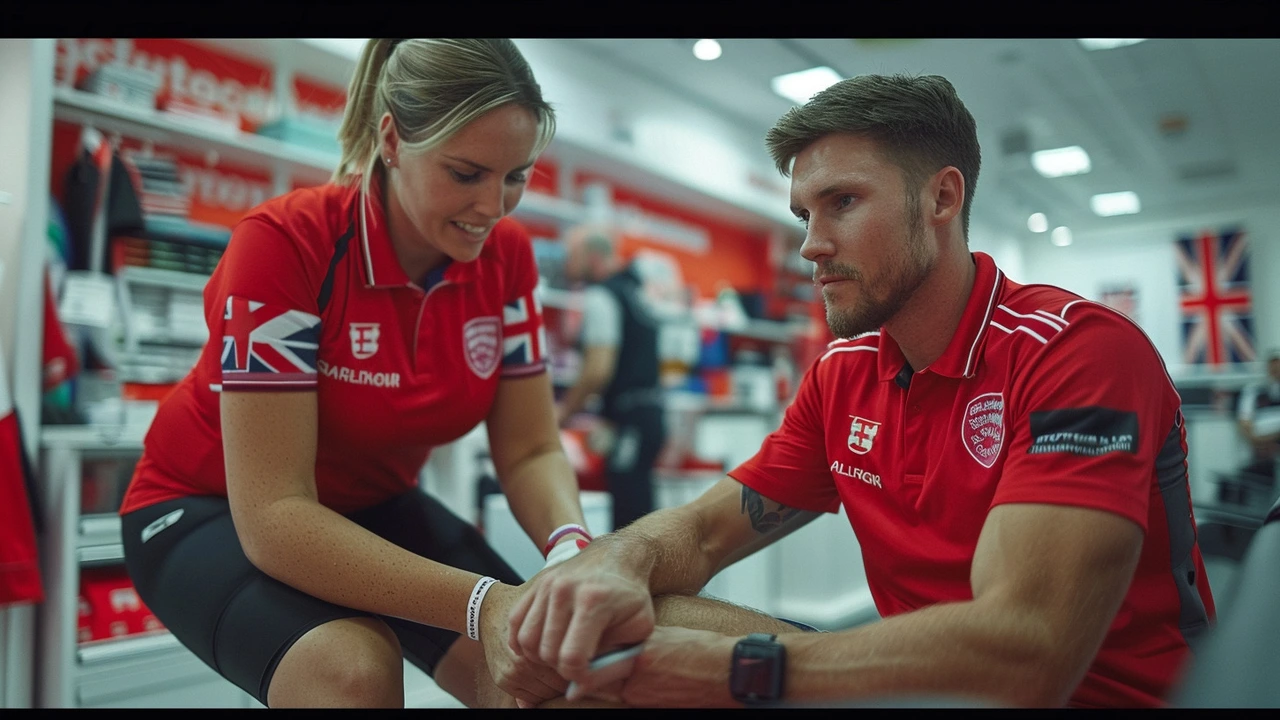Understanding the Basics of Sports Massage
Sports massage is more than just a luxurious treat for the body; it's a crucial component of any athlete's training and recovery regime. At its core, sports massage is designed to prepare the body for peak performance, alleviate muscle tension and fatigue, and facilitate the recovery process following physical exertion. Unlike the gentle strokes of a relaxation massage, sports massage incorporates a variety of techniques including kneading, tapping, and stretching to target the muscles most used during physical activity.
The origins of sports massage are deeply rooted in history, dating back to ancient times when Greek and Roman athletes would receive massages before competing. Fast forward to today, and the practice has evolved into a scientifically-backed approach to enhancing athletic performance and reducing the likelihood of injury. Studies have consistently shown that regular sports massage can improve flexibility, increase range of motion, and decrease muscle stiffness. This not only helps athletes perform better but also supports long-term physical health and well-being.
When I first introduced Elliott to sports massage, he was skeptical about its benefits. But after integrating it into his routine, he noticed a significant decrease in recovery time and a remarkable improvement in his flexibility. It was a tangible demonstration of how effective sports massage can be, not just for professional athletes but for anyone looking to maintain an active lifestyle.
Benefits of Sports Massage for Athletes and Active Individuals
The benefits of sports massage extend far beyond mere relaxation. For athletes and physically active individuals, incorporating sports massage into their wellness routine can lead to measurable improvements in performance and physical condition. Some of the key benefits include enhanced flexibility, which allows for greater freedom of movement and decreased risk of injury. By working on soft tissue mobility, sports massage can help prevent the stiffness and soreness that often come with rigorous training.
Moreover, sports massage plays a pivotal role in reducing recovery time between workouts. Through improved blood circulation and lymphatic flow, toxins are flushed from the muscle tissues more efficiently, accelerating the healing process. This is crucial for athletes who need to maintain a high level of performance consistently. Enhanced mental focus and reduced stress levels are also notable benefits, as the massage stimulates the release of endorphins, contributing to a sense of calm and well-being that can improve mental clarity and focus during competitions.
A study published in the Journal of Sports Science & Medicine highlighted the efficacy of sports massage in reducing delayed onset muscle soreness (DOMS) and improving muscle performance after strenuous exercise. This is a testament to the tangible benefits sports massage can offer in terms of recovery and performance enhancement.
Key Techniques and Their Applications
Sports massage incorporates a variety of techniques, each tailored to meet the specific needs of athletes and active individuals. Techniques such as Effleurage, Petrissage, and Deep Tissue Manipulation are commonly used to warm up the muscles, enhance circulation, and break down scar tissue, respectively. Effleurage involves long, sweeping strokes that increase blood flow to the muscles, while Petrissage includes kneading and squeezing movements that facilitate deeper muscle work. Deep Tissue Manipulation focuses on realigning deeper layers of muscles and connective tissue, addressing chronic patterns of tension and aiding in injury prevention.
Another critical technique in the sports massage repertoire is Trigger Point Therapy, which involves applying pressure to specific points on the muscle to relieve pain and increase range of motion. This can be particularly beneficial for athletes dealing with muscle knots or trigger points that cause referred pain and restrict movement. Myofascial Release is also widely used, targeting the connective tissue (fascia) that surrounds the muscles, providing a gentle stretch that can lead to significant improvements in flexibility and mobility.
It's vital to seek a certified sports massage therapist who understands the unique demands of athletic performance and can tailor the massage techniques to your specific needs. This ensures that you receive the maximum benefit from your sports massage sessions, whether you're looking to enhance performance, recover from an injury, or simply maintain a healthy and active lifestyle.
Incorporating Sports Massage into Your Routine
Making sports massage a regular part of your health and fitness routine doesn't require a drastic overhaul of your schedule. Even incorporating a short session once every two weeks can yield significant benefits. For those in intense training or recovery from an injury, more frequent sessions may be advisable. It's important to listen to your body and adjust accordingly.
It's also worthwhile integrating other complementary practices such as stretching, hydration, and proper nutrition to enhance the benefits of sports massage. A holistic approach to body maintenance can lead to better overall performance and well-being. Elliott and I have incorporated yoga and meditation into our routines alongside sports massage, and we've both noticed a remarkable improvement in our physical and mental health.
Remember, sports massage is not a one-size-fits-all solution. It's about finding what works best for your body and your athletic goals. Consulting with a professional can help tailor the approach to meet your specific needs, ensuring that you reap the maximum benefits and continue to perform at your best.






